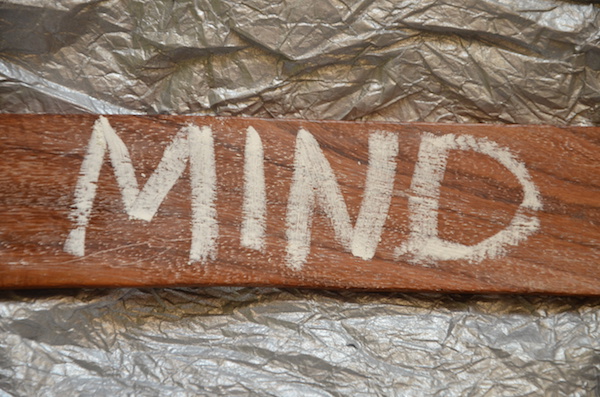FRIDAY, Oct. 8 (HealthDay News) — A series of suicides involving bullied gay teens has shocked much of America this past month.
On Sept. 9, 15-year-old Billy Lucas of Greenburg, Ind., hanged himself after enduring constant taunts from bullies at school.
Two weeks later, 13-year-old Asher Brown from suburban Houston shot himself soon after revealing he was gay.
And on Sept. 27, another 13-year-old, Seth Walsh of Techachapi, Calif., died after injuries sustained from hanging himself. He too, had endured “relentless” bullying from other kids, according to The New York Times.
One more death — the Sept. 22 suicide of 18-year-old Rutgers University freshman Tyler Clementi — catapulted these and other suicides of young gay teens into the media spotlight. Clementi’s roommate, Dharun Ravi, allegedly broadcast surreptitious video footage over the Internet of Clementi in an intimate encounter with a young man. Last week, Clementi left a message on his Facebook page: “Jumping off [George Washington] bridge sorry,” and then did just that.
Cases like these are far from rare, and “this may be the tip of the iceberg,” said Dr. David Reitman, chair of the Gay, Lesbian, Bisexual Transgender and Questioning Special Interest Group, part of the Society for Adolescent Health and Medicine. In a statement, he said “the tragic outcome in these cases underscores the profound consequences that bullying and harassment can have on a young person.”
Of course any child, gay or straight, can become victims of bullying, as the much-publicized suicide in January of 15-year-old Phoebe Prince of South Hadley, Mass., showed all too tragically. She had withstood months of bullying from schoolmates after moving from Ireland.
But experts say adolescence renders young people especially vulnerable to harassment, and the difficulties of grappling with sexuality can complicate that further.
Columbia University psychiatry professor Dr. Jeffrey Lieberman noted that the adolescent brain is still developing and sensitive to negative feedback from peers. Teens “are very prone to take things to an extreme,” he told ABC News. “So what may be an insult or a setback to an adult, to an adolescent is the end of the world.”
Add to that the impulsive nature of youth and suicide becomes more likely. “Something happens, they’ve got to take care of it right away,” Lieberman said. “They can’t sit with it or try to work through it or not react to it.”
Despite some headway in societal acceptance of gay people generally, the bullying of gay teens remains widespread. According to a recent survey conducted by the New York-based Gay, Lesbian, and Straight Education Network, almost nine out of every 10 gay, lesbian, bisexual or transgendered middle and high school students say they suffered physical or verbal bullying in 2009.
A teen’s outward aspect — seeming somewhat “feminine” if male, or “masculine” if female — can up the risk of bullying and contribute to a propensity to depression for years to come, one new study suggests.
In the study, published in the November issue of Developmental Psychology, researchers looked at data from a survey of 245 gay, lesbian, bisexual and transgender young adults from the Bay Area in California. About half were Latino and about half were white; they realized their sexual orientation at an average age of 11 and reported coming out — disclosing their orientation to someone else — at the average age of 15.
The participants who reported the most bullying as children were about 2.5 times more likely as the others to be clinically depressed as young adults, the study found. About 63 percent of the most bullied kids were clinically depressed, compared to 34 percent of the least bullied.
In the big picture, the bullying of the most feminine boys and the most masculine girls — that’s the way they described themselves looking back on their childhoods — appeared to “essentially account for major differences in mental health between young gay adults,” said study co-author Stephen T. Russell, a professor at the University of Arizona.
“We didn’t realize how important the harassment was going to be,” said Russell, who is also director of the Frances McClelland Institute for Family Studies and Human Development. As the children become young adults, “it completely accounts for the differences in their mental health.”
Young people involved in the often difficult process of understanding their sexuality and coming out should know that support is out there, however.
Reacting to the Clementi tragedy, syndicated sex columnist Dan Savage, who is gay, launched the “It Gets Better” campaign in September. That YouTube site features successful gay adults from all walks of life who talk about their own experiences with bullying — and how they came through it.
Speaking on the site about his own experience, Project Runway style guru Tim Gunn relates that “as a [gay] 17-year-old youth who was in quite a bit of despair, I attempted to kill myself.” Gunn found the support he needed, however, and now urges teens facing the same fears to call The Trevor Project, a 24-hour suicide hotline for gay youth.
Experts say the best sources of support remain those closest to home, however.
“The three main groups of pivotal figures [for adolescents] are family, friends and their schoolmates,” Glenda Tesone, executive director of the Lesbian, Gay, Bisexual & Transgender Community in New York City, told The New York Times. “If they’re feeling isolated and like they can’t tell those people, it’s going to be a very rough ride.”
More information
Contact the The Trevor Project to reach a 24-hour, toll free confidential suicide hotline for gay teens and those who are questioning their sexuality.

